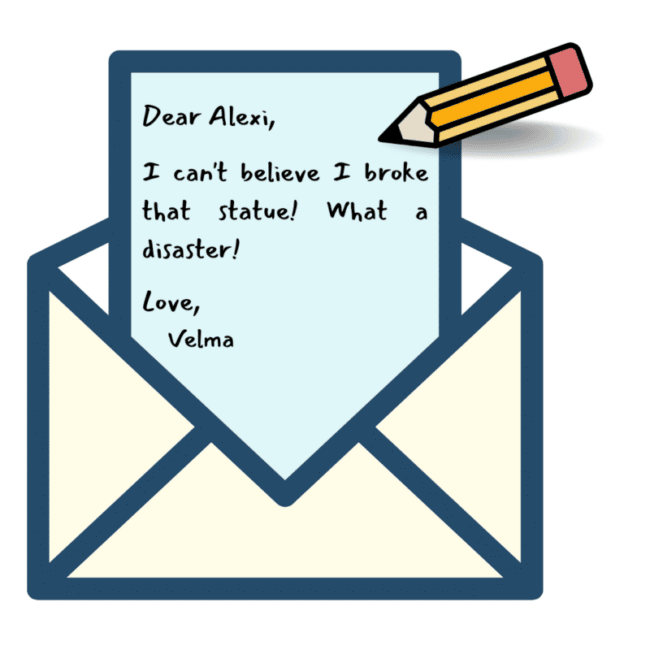Writing: Checking for Grammar
Writing: Checking for Grammar Revision
Why is Grammar Important?
Grammar is how words fit together and are structured within sentences.
Getting your grammar right will make your writing clearer and earn you more marks in the exam!
So let’s have a look at how to check your grammar…
Sentence Rules
A Clause Reminder…
Before we dive into sentence structure, let’s go over some clause basics…
A clause is a part of a sentence. Some sentences have just one clause, whilst others have more than one.
Independent clause: An independent clause makes sense by itself. This sentence is a good example of an independent clause: ‘People need to take these issues seriously’. It makes sense without any additional words or phrases.
Subordinate clause: This is a clause that doesn’t make sense by itself. A subordinate clause needs to have other parts of the sentence to make sense and add additional detail to a sentence.
For example:
‘If people don’t take these issues seriously, terrible things will happen‘
‘We couldn’t go to work, as there was too much snow.’
The parts highlighted in red are subordinate clauses, as they do not make sense by themselves. The parts highlighted in green are independent clauses, as they would make sense on their own as separate sentences.
Sentence Types
There are three main types of sentences to be aware of and use: simple, compound, and complex.
You should vary your sentence types often to make sure that your work is interesting and not repetitive.
Simple Sentences
A simple sentence is a complete independent clause.
They can be used to convey information quickly, or create dramatic effect in writing by increasing the pace of the text or emphasising specific words.
However, it’s important to not overuse simple sentences, as too many of them can lead to a lack of complexity or detail in your writing.
Examples:
‘Fatima let them continue with their singing’.
‘The night was as cold as bone’.
‘People should have more respect for others’.
As you can see, these sentences stand alone, without any additional information being added with commas or connective words. This means that they are independent clauses.
Compound Sentences
A compound sentence is formed when two independent clauses are joined with a semicolon or a connective word, like ‘and’ or ‘but’.
You can use these to join two related ideas, and add extra complexity to your writing by showing that your ideas are connected.
The second clause adds to the first, giving the reader more detail.

Examples:
Mohammed went to the shop, as he had run out of bread.
I like coffee and Sophie likes herbal teas.
Gabriel went to work, but Helma went to the party and Lukas went to fix his car.
I wanted to go for a walk; the rain changed my plans.
Complex sentence
A complex sentence contains a major clause and at least one subordinate clause.
Complex sentences often use connective words like ‘because’ or ‘even though’ to introduce their subordinate clause.
Examples:
‘I went to the art gallery because I was in town anyway.’
‘Whenever Inaya was sad, her father cooked her favourite meal.’
‘The bird squawked when the car drove past it.’
The parts in green are independent clauses (the major clauses in the sentences), and the parts in orange are dependent clauses (the subordinate clauses in the sentences) that add more detail.

Here, more detail can be added to an independent clause…
For Example:
‘I went to the art gallery’
‘The bird squawked’
‘Her father cooked her favourite meal’.
The ‘how’, ‘what’, ‘why’, ‘where’, and ‘when’ questions that the subordinate clause is too simple to explain, can be explained instead through complex sentences.
For Example:
‘Because I was in town anyway’
‘When the car drove past’
‘Whenever Inaya was sad’
Subject-Verb Agreement Errors
In your answer you need to use the correct form of verbs with the correct subject…
The subject of the sentence is the person, place, or thing that is performing the action of the sentence.
The verb is the ‘doing‘ word of the sentence, outlining the action being performed.
Getting the right agreement between the verb and subject – so pairing the right ones together – is the basis of a good grammatical sentence!
For example, using plural verbs to agree with plural subjects, and using singular verbs to agree with singular subjects makes perfect sense.
Let’s take a look at some examples now…
| Singular subject -s | Singular verb +s |
| She | Sings |
| Elephant | Chases |
| Detective | Searches |
| Plural subject +s | Plural verb -s |
| Girls | Sing |
| Elephants | Chase |
| Detectives | Search |
Word Classes
Varying your sentence openers, and making a sophisticated word choices will make your writing more interesting to the reader.
- Nouns and pronouns: There are different categories of what nouns or pronouns can refer to.
Pronouns: pronouns refer more specifically to people e.g. she/her/he/him/they/them.
Nouns can refer to the following…
A Place: London, the jungle.
A Thing: car, laptop, train, tablecloth.
An Idea: hope, fear, love, freedom of expression.
- Adjectives describe the nouns or pronouns used in a sentence. They can be positive and negative, and change the tone of the writing through description.
For example: ‘the angry man’, ‘the massive crowd’, ‘the grey, rumbling clouds made the air chilly‘.
- Comparative adjectives have ‘more’ or ‘less’ in front of the adjective, and make comparisons with other subjects.
For example: ‘Faster’, ‘louder’.
- Superlative adjectives are a type of comparative, which describe words to the highest possible degree.
For example: ‘curliest’ ‘fastest’.
Adverbs…
…are words that change or modify a verb, adjective or even another adverb.
They can tell the reader: where, when, what, how, why and to what extent something happens.
For example:
‘nearby’
‘weekly’
‘tonight’
‘almost’
‘frequently’
‘hardly’
‘dangerously’
‘safely’
‘surprisingly’
You’ll notice they often end in ‘ly’
Verbs…
…are words conveying an action, like ‘run‘, ‘dance‘, ‘sin‘, ‘cycle‘, but don’t fall into the trap of only using simple verbs in your writing.
Verbs can be used to suggest possibility, also known as modal verbs: ‘might‘, ‘could‘ etc.
Verbs can also be used to help the subject, ironically known as helping or auxiliary verbs, ‘am’. ‘have’, ‘be‘.
Conjunctions…
…are words which are used to join two clauses.
For example:
‘but’
‘since’
‘and’
‘although’
Prepositions…
…are words which inform the reader where or when something is ‘on’ ‘after’.
Common Mistakes
Tenses
Using tenses incorrectly, or switching tenses halfway through a sentence is incorrect use of grammar.
Here are some examples of correct uses of tense:
Past tense:
waited, crept, ran, danced
Present tense:
waits, creeps, runs, dance, dances
Future tense:
will wait, will creep, will run, will dance
The past tense here is regular, where only ‘ed’ is added onto the present tense verbs.
Here are some examples of the present tense and the irregular past tense of the word, where ‘ed‘ is not used:
Drive – Drove
See – Saw
Arise – Arose
Awake – Awoke
Become – Became
Passive vs Active Voice
In the passive voice, the subject is having the verb done to it.
The reader is focused on the experience of the action.
E.g.
The statue was knocked over by me
A letter was written by Velma
Active voice the subject does the verb, the reader is focused on the action itself.
E.g.
I knocked over the statue
Velma wrote a letter
What voice is used in the image below?

If you figured out (or guessed) active voice then you are correct! Well done!




